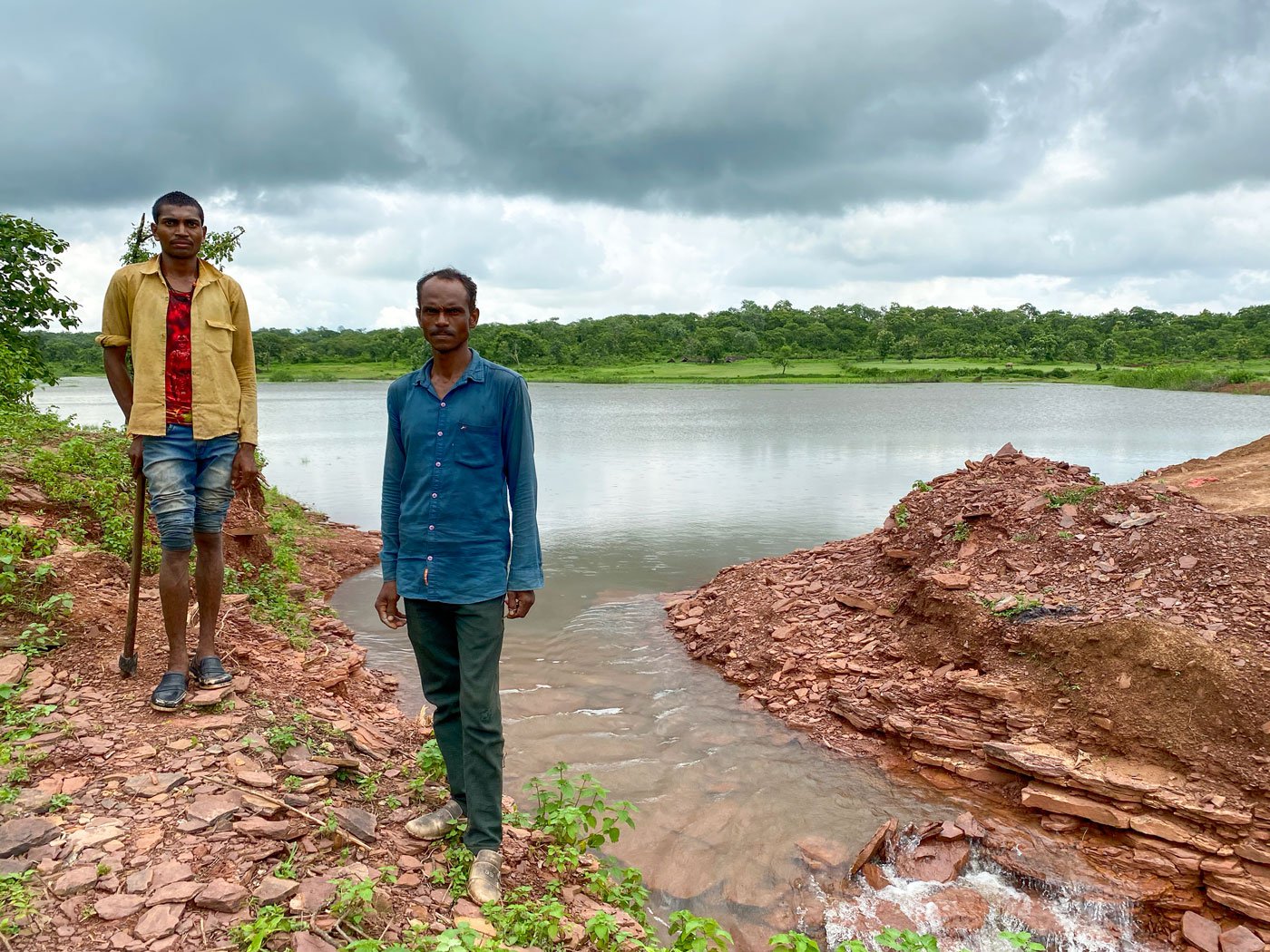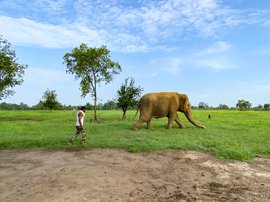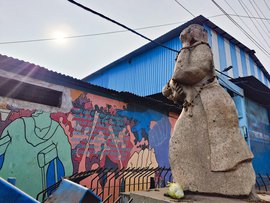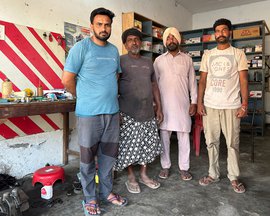It’s been raining in Panna district through August and the Kaithabaro dam is filled to capacity. It’s a run-off from the hills located in the nearby Panna Tiger Reserve (PTR).
Suren Adivasi arrives at the dam armed with a hammer. He looks carefully at the swiftly flowing waters, checking that no new stones or debris are blocking the flow. He uses the hammer to move a couple of stones around to better direct the gushing waters.
“I have come to see if the water is flowing well,” he tells PARI. “Yes, it’s flowing,” nods the small farmer from Bilpura village, relieved that his paddy crop just a few metres downstream, will not dry out.
His eyes sweep across the small dam and he says, “it’s a great blessing. Rice can grow, also wheat. Before this I couldn’t irrigate and farm the one acre of land I have up here.”
It’s a blessing the people of Bilpura gave themselves when they helped build the dam.
A village of roughly a thousand people, Bilpura has mostly Gond Adivasi (Scheduled Tribe) farmers, each with a few head of cattle. The Census of 2011 records the village as having only a handpump and a well. The state has built ponds in and around the dirstrct, lined with stones, but locals say there have no catchment and, " paani rukta nahin hai [the water doesn't stay]."


Left: Suren Adivasi arrives at the dam with a hammer to make sure the water is flowing towards the fields. Right: Maharaj Singh Adivasi says, 'earlier there was no farming here. I used to migrate to Delhi and Mumbai to do daily wage work at construction sites'
People of the village own roughly 80 acres of land that lies between the dam and their village. “Earlier there was a small naala [stream] and it was used in a few acres,” says Maharaj Singh. “Only after the dam came have we all been able to plant in our fields.”
Maharaj has also landed up at the dam site to ensure that the five acres on which he has planted wheat, channa [bengal gram], rice and makka [corn] for self-consumption is safe. In a good year he manages to sell some of the produce.
“This water goes to my field,” he says, pointing towards it. “Earlier there was no farming here. I used to migrate to Delhi and Mumbai to do daily wage work at construction sites.” He also worked at a plastics and then a thread company.
Since the dam was rebuilt in 2016, he has not had to go – his earnings from farming are sustaining him and his family. Water from the dam now lasts through the year and it’s also used for cattle.
The move to rebuild the dam was the outcome of public meetings held by the non- governmental organisation, People’s Science Institute (PSI). “On speaking to locals we learnt that they all had land, but with no regular irrigation, they were unable to use it,” says Sharad Yadav, cluster coordinator at PSI.


Left: Maharaj Singh Adivasi says, 'earlier there was a small naala [stream] and it was used in a few acres. Only after the dam came have we all been able to plant in our fields.' Right: Maharaj pointing to the flow of the water and the fields that it irrigates


Left: Sharad Yadav says the state has tried to build other dams like this one nearby, but the water doesn't stay. Right: Locals often turn up at the dam to check on it
The state had built a dam on a pond near a grove of kaitha (wood apple) trees. It was built not once, but three times over 10 years. The last time it caved during a monsoon, state officials decided enough was enough and reduced the size of the dam.
The small dam did not suffice: “water barely reached the fields, and it dried out well before summer so was of no use for our irrigation needs,” says Maharaj. “Only about 15 acres could be cultivated and then only one crop.”
In 2016, people from the village decided to take matters into their own hands and offered their shram daan (their labour as donation) to rebuild it. “We carried mud, dug, broke stones and placed them, and in one month we had finished the dam. All the people were from our village, mostly Adivasi and some Other Backward Class,” says Maharaj who also took part.
The new dam is bigger in size and has not one but two weirs to allow the water to flow out evenly and prevent another break. Assured and relieved that the dam is in no danger, Maharaj and Suren return to their homes, just before a short sharp shower descends.




